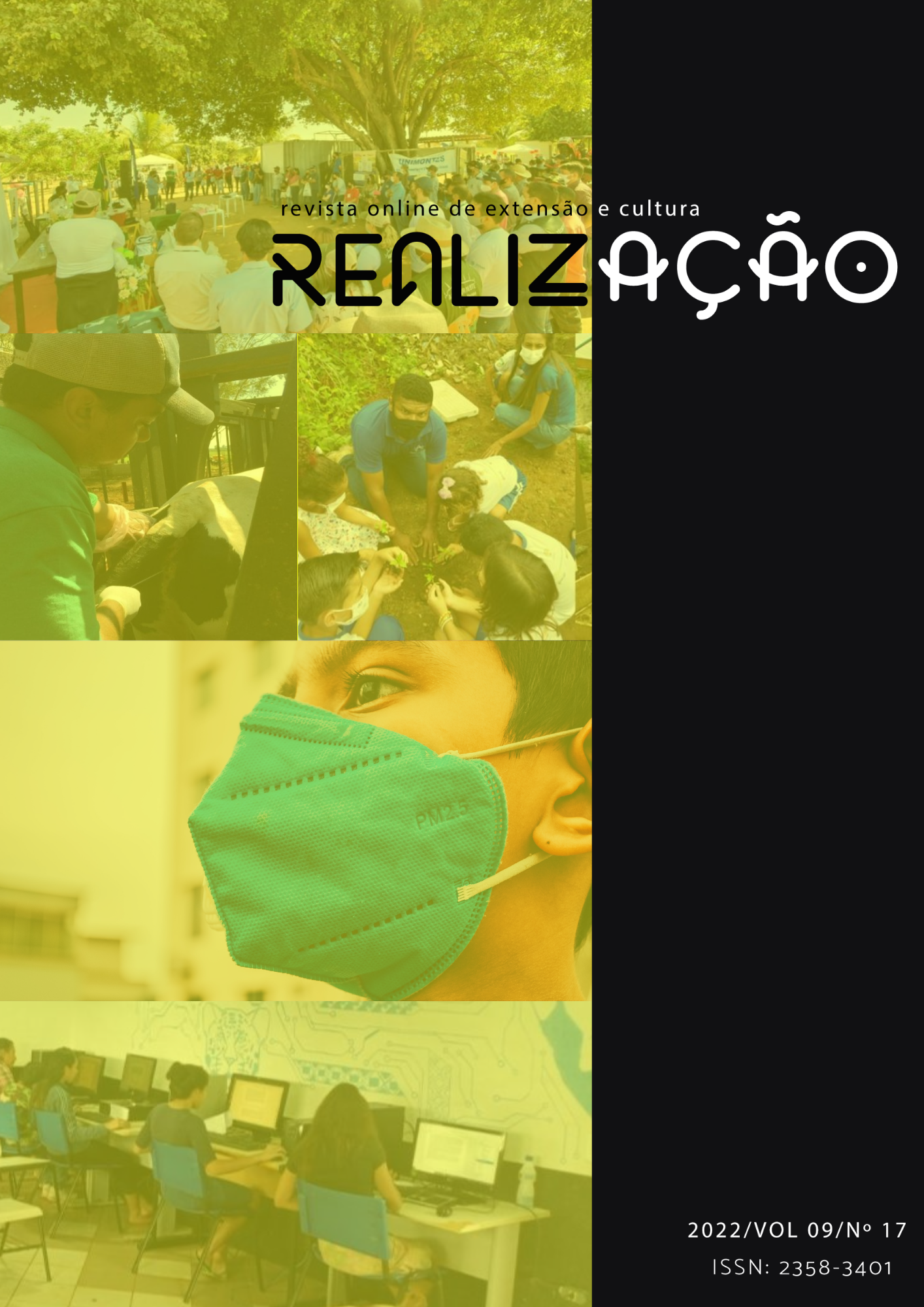Pedagogical didactic meliponary
DOI:
https://doi.org/10.30612/realizacao.v9i17.16118Keywords:
Students, “stingless” bees, Conservation, ExtensionAbstract
Currently, several studies have reported the decline of numerous pollinators, especially bees, responsible for pollinating approximately 85% of floral species in the environment. In this way, the Meliponário project of the State University of Montes Claros (Unimontes) was created with the function of subsidizing the optional discipline of the Zootechnics course - "Creation of Meliponíneos", complementing the practices of the Beekeeping discipline and conserving and preserving bees natives, encouraging producers and high school and elementary school students as part of Environmental Education work. The project was developed at the University in 2015, taking shape over the years. Today, it has 15 boxes with 15 species of Jatais, three Irais and two Tubunas, and a hotel for solitary bees and several hollow cavities (trunks and pierced bamboos) for nesting solitary species. Visitors and students, when visiting the site, are able to identify and compare common species in the region, in addition to having information about the benefits they play in the ecosystem and about their nesting habits. The exhibition focused on aspects of nesting, therapeutic products, nutrition, honey extraction and bee management.
Downloads
References
BAWA, K. S. Plant-pollinator interactions in tropical rain forests. Annual Review of Ecology and Systematics, v. 21, p.399-422, 1990.
BROWN, J. C.; OLIVEIRA, M. L.The impact of agricultural colonization and deforestation on stingless bee (Apidae: Meliponini) composition and richness in Rondônia, Brazil. Apidologie , v. 45, p.172-188, 2014.
BÖLTER, S. G.. NOGUEIRA, S. V. EDUCAÇÃO AMBIENTAL E OS DESAFIOS PARA O DESENVOLVIMENTO SUSTENTÁVEL. Ambiente & Amp; Educação, v.23, n.2, p.452–465, 2018.
DA SILVA, G. R.; PEREIRA, de M. F.; SOUZA, A. de B.; LOPES, M. T. do R.; CAMPELO, J. E. G.; DINIZ, F. M. Aspectos bioecológicos e genético-comportamentais envolvidos na conservação da abelha Jandaíra, Melipona subnitida Ducke (Apidae, Meliponini), e o uso de ferramentas moleculares nos estudos de diversidade. Arquivos do Instituto de Biologia, São Paulo, v.81, n.3, p. 299-308, 2014.
FREE, J. B. A. Organização social das abelhas. São Paulo: Universidade de São Paulo, 1980, 79p.
KIATOKO, N.; RAINA, S. K.; MULI, E.; MUEKE, J. Melhoria da qualidade do fruto em Capsicum annum através da polinização por Hypotrigona gribodoi em Kakamega, oeste do Quênia. Ciência Entomologia, v. 17, n.1, p.106-110.
MICHENER, C.D. The Bees of The World. 2ed. Baltimore, MD: Johns Hopkins University Press. 2007.
ROUBIK, D. W. Ecologia e história natural das abelhas tropicais. Nova York, Cambridge University Press, 1989, 514p.
SANTOS, A.B. Abelhas nativas: polinizadores em declínio. Natureza online, v.8, n.3, p.103-106, 2010.
SILVA, W. P.; PAZ, J. R. L. Abelhas sem ferrão: muito mais do que uma importância econômica. Natureza on line, v.10, n.3, p. 146-152, 2012.
SOUZA, E. C. A.; MENEZES, C.; FLACH, A. Mel de abelha sem ferrão (Hymenoptera, Apidae, Meliponini): uma revisão do controle de qualidade, perfil químico e potencial biológico. Apidologia, v.52, p. 113-132, 2021.
Downloads
Published
How to Cite
Issue
Section
License
Copyright (c) 2022 Ariadne Freitas Silva, Antonia de Maria Filha Ribeiro , Carlos Augusto Rodrigues Matrangolo , Rodolfo Oliveira Rocha, Camila Maida de Albuquerque Maranhão, Cristiane Alves Fogaça

This work is licensed under a Creative Commons Attribution-NonCommercial-ShareAlike 4.0 International License.
Autores que publicam nesta revista aceitam as normas de publicação, bem como, concordam com os seguintes termos:
(a) O Conselho Editorial se reserva ao direito de efetuar, nos originais, alterações da Língua portuguesa para se manter o padrão culto da língua, respeitando, porém, o estilo dos autores.
(b) Autores mantêm os direitos autorais e concedem à revista o direito de primeira publicação, com o trabalho simultaneamente licenciado sob a Creative Commons Atribuição-NãoComercial-CompartilhaIgual 4.0 Internacional que permite: Compartilhar — copiar e redistribuir o material em qualquer suporte ou formato e Adaptar — remixar, transformar, e criar a partir do material. A Creative Commons Atribuição-NãoComercial-CompartilhaIgual 4.0 Internacional considera os termos seguintes:
- Atribuição — Você deve dar o crédito apropriado, prover um link para a licença e indicar se mudanças foram feitas. Você deve fazê-lo em qualquer circunstância razoável, mas de nenhuma maneira que sugira que o licenciante apoia você ou o seu uso.
- NãoComercial — Você não pode usar o material para fins comerciais.
- CompartilhaIgual — Se você remixar, transformar, ou criar a partir do material, tem de distribuir as suas contribuições sob a mesma licença que o original.
- Sem restrições adicionais — Você não pode aplicar termos jurídicos ou medidas de caráter tecnológico que restrinjam legalmente outros de fazerem algo que a licença permita.


